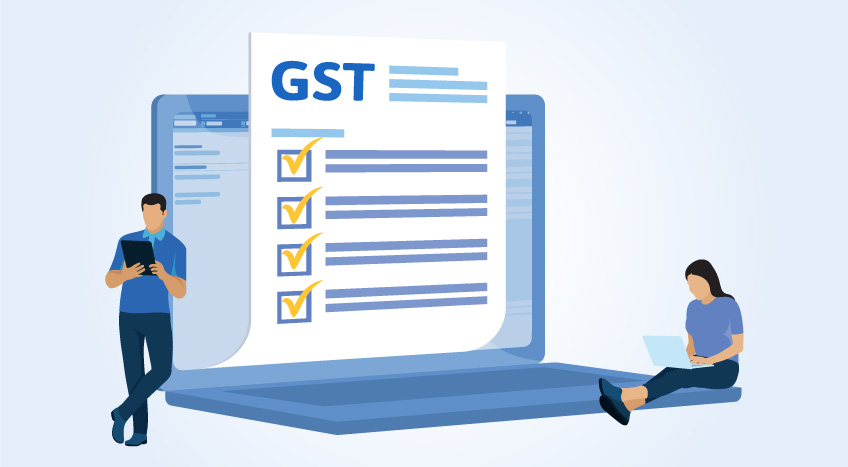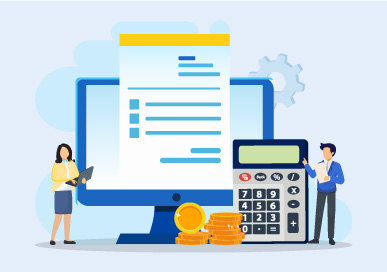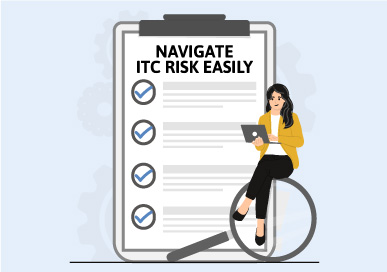In today’s business landscape, the Invoice Management System (IMS) has emerged as a crucial platform for managing an organisation’s financial operations, especially under the GST regime. IMS automates invoice reconciliation, tracks tax compliance, and ensures data accuracy, while minimising errors, and improving compliance efficiency.
However, for small and medium-sized enterprises (SMEs), this might be challenging. These include technical constraints, employee adaptability, and compliance issues.
This blog discusses the hurdles SMEs face when adopting an invoice management system under GST and outlines strategies to overcome them, enabling businesses to effectively utilise IMS.
Understanding the challenges of an invoice management system under GST
Implementing an Invoice Management System (IMS) under GST presents several challenges, particularly for SMEs transitioning from manual or outdated systems. Here are the key challenges:
Technical readiness
SMEs often lack the technical infrastructure required for seamless IMS integration. Many continue to rely on outdated tools incompatible with IMS features. Additionally, the absence of IT expertise further complicates the integration process.
Adjustment period
Transitioning to IMS involves a steep learning curve for employees accustomed to tools like Excel or legacy EDI systems. Resistance to change and the time required for sufficient training can slow down the implementation process.
Uncertainty in Input Tax Credit (ITC)
ITC is vital to GST compliance and cash flow management. However, without access to GSTR-2B, businesses face challenges in matching suppliers’ invoices and determining their eligible ITC. This creates a lot of uncertainty. IMS helps automate the process, ensuring that claims are accurate and compliant with GST regulations.
Difficulty in managing GST
Traditional invoice-matching methods are tedious and prone to human error. Many SMEs resort to guesswork or simplified calculations, increasing the risk of misstatements, penalties or audits.
Increased compliance burden
GST implementation has added layers of compliance for SMEs. Managing data tracking invoices, and ensuring accurate and timely filings can overwhelm businesses with fewer resources.
How to overcome IMS implementation challenges?
Despite these problems, implementing an invoice management system under GST is achievable with the right strategies. Here’s how:
Strategic planning for integration
Thorough planning is essential for successful IMS implementation.
Gap analysis: Identify inefficiencies in your current system and identify what other methods or tools are needed.
Vendor selection: Choose an IMS platform whose offerings align with your enterprise’s requirements, especially for SMEs.
Step-by-step implementation: Roll out IMS in phases, starting with a pilot test. Use this stage to identify and resolve issues before a full-scale rollout.
Effective employee training and communication
Training and creating a culture of change are critical to IMS’s success.
- Structured training programes: Organise training sessions tailored to employees’ competency levels.
- Cross-department collaboration: Involve finance, sales, and operation teams to ensure a collective understanding of IMS’s importance.
- Continuous support: Provide ongoing support to build employees during the transition.
Invest in GST-compliant software
To streamline invoice reconciliation and GST compliance, businesses must invest in GST compliant software.
Why addressing IMS challenges matter?
Overcoming IMS implementation hurdles offer significant advantages:
Improved operational efficiency: Automation saves time and effort, enabling faster and more efficient processes
Enhanced accuracy: Digital systems reduce invoicing errors and ensure GST compliance
Better cash flow management: Real-time updates on ITC and GST liability aid informed financial decisions
Regulatory compliance: A GST-compliant IMS ensures adherence to legal requirements, reducing penalties and audit risks
Conclusion
Adopting an invoice management system under GST is a long-term investment for businesses. While challenges such as technical readiness, employee adaptation and compliance issues may seem daunting, a structured approach prioritising planning, training and sophisticated tools can ensure success.
For SMEs, IMS implementation is not merely about legal compliance; it is essential for survival in an increasingly competitive market. By taking the first step towards efficient invoicing, businesses can build a strong foundation for long-term growth and success.











